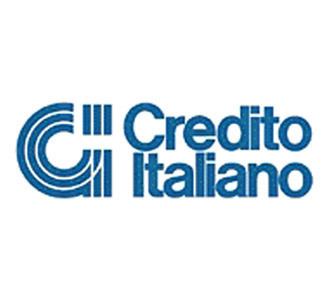Formerly called Banca di Genova Industry Financial services | Former type Società per azioni Ceased operations 1998 | |
 | ||
Native name Credito Italiano S.p.A. Defunct 1998 (1998) (merger)30 June 2002 (2002-06-30) | ||
Credito Italiano also known as just Credit, was an Italian bank, now part of UniCredit. It was merged with Unicredito in 1998, forming Unicredito Italiano (now UniCredit). Circa 1999 to 2002 UniCredit created a new subsidiary of the same name to run the retail network of Credito Italiano. On 1 July 2002 the subsidiary received the assets of sister banks to become UniCredit Banca.
Contents
History
Founded on 28 April 1870 in Genoa as Banca di Genova, it took part in the establishment of Banca d'Italia and opened the first trans-atlantic banking business with Buenos Aires (1872). Local shareholders were local nobility (Pallavicino and Balbi), bankers (Quartara, Polleri) and merchants (Lagorio, Dodero, Bacigalupo), creating an initial capital of 3 million lira. It acquired "Banca Vonwiller" of Milan, but a large national financial crisis led to refinancing by German banks and name change to "Credito Italiano" (1895). Later, it acquired "Banca Manzi" of Rome (1901) and "Banca Meuricoffre" of Napoli (1905). Its headquarters moved to Piazza Cordusio in Milan, and, despite the Italo-Turkish War and World War I, it was able to open branch offices in London (1911) and New York City (1917), as well as in Paris and Berlin (1921). Later it acquired the "Banca del Monferrato", "Banca di Legnano", "Credito Varesino and the Swiss Banca Unione di Credito (1919), and in 1920 it joined the "Compagnia Finanziaria Nazionale" (1920); it also established "Banca Italo-cinese", the "Banca Italo Viennese" and "Tiroler Hauptbank" (1920), and contributed to the establishments of Banca Italo Egiziana (1924) and Banca Nazionale di Albania (1925).
As a result of the great depression, it went bankrupt and was revitalized by Istituto per la Ricostruzione Industriale (1933–1990s).
Italian government introduced a law that forced bank to separate short term loan and medium lon business in 1936. Credito Italiano, along with two other "bank of national interests", BCI and Banco di Roma, had formed Mediobanca in 1946.
Privatization and expansion
In 1990s the bank was privatized. The bank also acquired Banca Popolare di Spoleto (about 50%) in 1992 and Banca Cattolica di Molfetta (35%) in 1994.
In 1995 the bank acquired a majority interests in Credito Romagnolo (and its subsidiary Banca Popolare del Molise) and Carimonte Banca (and its subsidiary Banca Popolare di Rieti), which was merged into Rolo Banca, except Banca Popolare di Rieti was spin off from Carimonte.
Formation of UniCredito Italiano
In late 1998 Credito Italiano was merged with Unicredito, which Unicredito was absorbed into Credito Italiano, and Credito Italiano was renamed into UniCredito Italiano. The original shareholders of Unicredito would owned about 38.46% shares of UniCredito Italiano.
In the same year Banca Popolare di Spoleto (July), Banca Cattolica di Molfetta (October) were sold, as well as Banca Popolare del Molise and Banca Popolare di Rieti were merged into Rolo Banca and UniCredit in June 1998 and 1999. In December 1999, Credito Italiano was reestablished as a subsidiary (instead of a division within the company).
UniCredit Banca
On 1 July 2002 It was renamed to UniCredit Banca, which received the retail bank assets from Rolo Banca, Banca CRT, Cariverona Banca, Cassamarca, Cassa di Risparmio di Trento e Rovereto and Cassa di Risparmio di Trieste. On 1 January 2003 UniCredit Private Banking and UniCredit Banca d'Impresa were spin off from UniCredit Banca. In 2010 the bank was completely absorbed into UniCredit.
